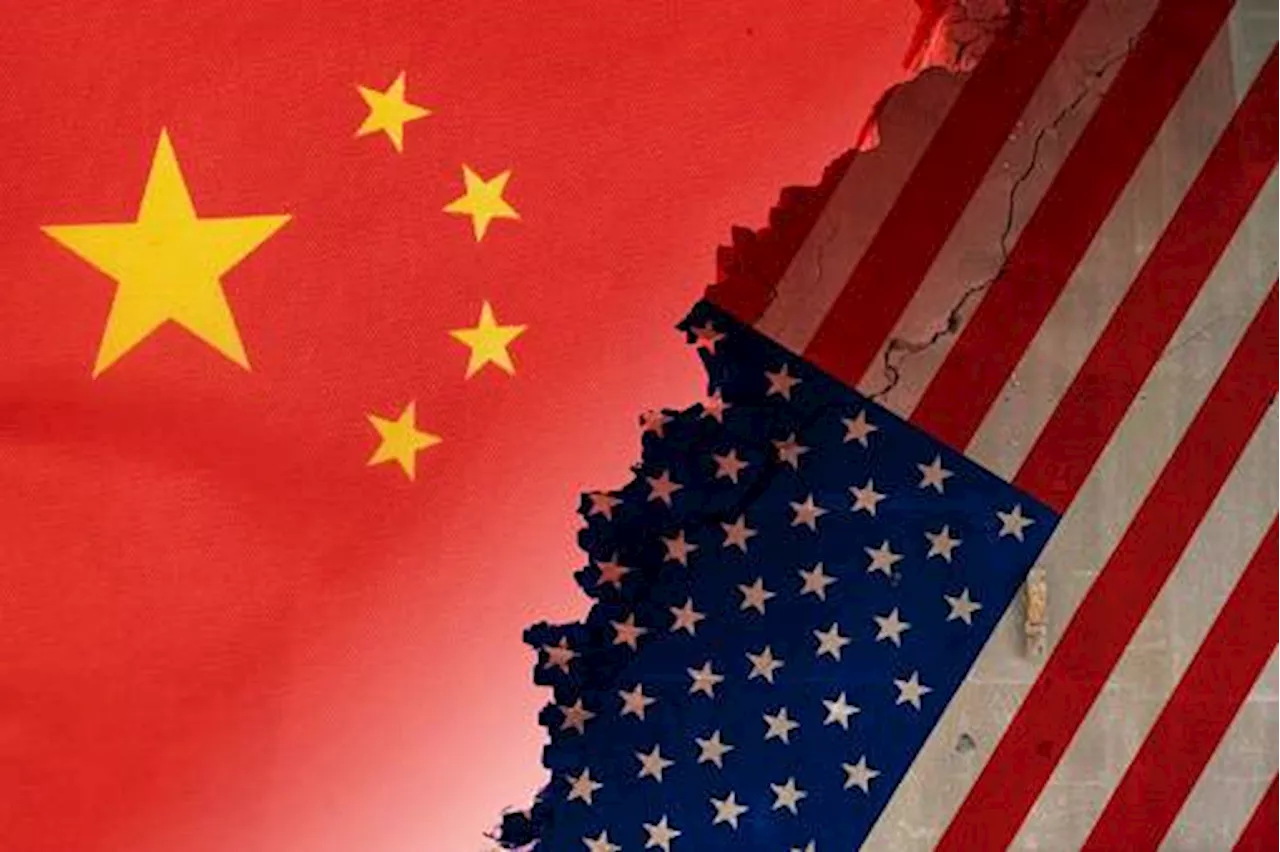President Trump's latest tariff threats against China highlight a deepening trade war. While the US aims to pressure Beijing, China's resilient economy and diversified trade network suggest a long game. The article explores the complexities of this trade war, its impact on US consumers, and the challenges faced by American businesses seeking alternatives to Chinese imports.
US President Donald Trump, never one to shy away from a headline-grabbing manoeuvre, announced on 21 January that he’s mulling a 10% tariff on Chinese imports, potentially set to take effect on 1 February. This move, the latest salvo in the long-simmering trade spat between the world’s two largest economies, raised eyebrows and questions in equal measure. The proposed tariffs, ostensibly aimed at pressuring Beijing into a more US-friendly trade posture, come against an ironic backdrop.
China’s exports, including those to the US, have recently surged. This trend seems to contradict Trump’s intended goal of curbing Chinese economic influence. During his re-election campaign, Trump upped the ante, threatening tariffs as high as 60% on Chinese goods. Such rhetoric fueled an already heated trade war but has yet to yield the intended concessions. So, what’s driving Trump’s tariff threats now? Is it strategic posturing or simply an effort to reclaim economic leverage? Clearly he is once again casting China as a central antagonist in America’s economic and social struggles. Accusing Beijing of fueling the fentanyl crisis by supplying precursor chemicals to the US’s neighbours, Trump framed the addiction epidemic as a consequence of lax border enforcement and international indifference. The rhetoric didn’t stop there. Trump proposed a steep 25% tariff on imports from Mexico and Canada, accusing both countries of enabling illegal immigration and fentanyl trafficking to the US. In tandem, he unveiled plans for an “external revenue service” to centralise collection of tariffs and foreign-derived revenue — a move that signals his continued belief in tariffs as a lever of economic power. Yet, the numbers paint a complex picture. By late 2024, Chinese exports to US companies had risen 4% year-over-year, highlighting Beijing’s resilience in the face of punitive trade measures. Meanwhile, the trade imbalance remains staggering. Chinese exports to the US reached $401 billion in 11 months in 2024, while American goods to China totalled just $131 billion. Trump’s escalating accusations against China, combined with his ambitious tariff strategy, reflect a broader effort to realign global trade — though it remains unclear who will blink first in this high-stakes standoff. In the chess game of global trade, tariffs are a double-edged sword and Donald Trump is no stranger to wielding them. His latest proposal to slap tariffs on all Chinese imports promises to target every product imaginable, from everyday essentials to niche industrial goods. While he touts this strategy as a way to protect American interests, the ripple effects could drive inflation higher, leaving US consumers to bear the burden. Take ship-to-shore cranes, for instance — critical to US infrastructure and entirely imported from China. A 25% tariff on these cranes has already added $131 million in costs to American ports. With no domestic alternatives, industries reliant on such imports find themselves trapped, unable to shift demand or dodge price hikes. It is a harsh reminder that protectionist policies often hit closer to home than intended. Meanwhile, Beijing appears unfazed, playing a patient and calculated game. The Belt and Road Initiative and deeper partnerships with Brics nations are part of a broader strategy to reduce reliance on the US market. As China diversifies its trade network, its willingness to absorb the tariff hit seems increasingly unlikely. The question remains — how long can the US sustain this win-or-lose trade war before consumers and industries alike demand a new strategy? For now, the clock is ticking. As Trump’s trade war escalates, American businesses are caught in an increasingly fraught search for alternatives to Chinese imports. This pursuit, however, is not easy. Should the US extend its tariff policies to key trading partners like the EU, Canada and Mexico, import costs from these nations could also skyrocket, creating a ripple effect that leaves few affordable options on the table. Compounding the issue is the already sanctioned Russian market, further narrowing the pool of viable suppliers. During the last tariff bout, levies on Canadian and Mexican steel drove domestic prices for iron and steel products up by as much as 17.7% in just eight months. The result? A zero-sum game for American consumers, who are left with two choices: higher costs or limited access to essential goods. Whether they are sourced from China or elsewhere, the burden ultimately lands squarely on their shoulder
TARIFFS TRADE WAR CHINA UNITED STATES ECONOMICS GLOBAL TRADE CONSUMERS BUSINESSES
South Africa Latest News, South Africa Headlines
Similar News:You can also read news stories similar to this one that we have collected from other news sources.
China to intensify cooperation with BRICS despite Trump's threatsIn a bold stance against US pressure, China reaffirms its commitment to BRICS cooperation as US President Donald Trump threatens 100 percent tariffs over the bloc's currency plans. While Putin downplays immediate currency alternatives, Beijing emphasises the alliance's focus on mutual prosperity and global economic stability.
Read more »
US businesses worried about Donald Trump's tariff and immigration plansBusinesses in the US are bracing for economic turmoil amid Donald Trump's tariff and immigration plans.
Read more »
 Panama Marks Canal Anniversary Amid Trump's Control ThreatsThe 25th anniversary of the Panama Canal's transfer from the United States is overshadowed by President-elect Trump's demand to regain control. Panamanians celebrate the milestone while condemning Trump's threats and reaffirming their sovereignty.
Panama Marks Canal Anniversary Amid Trump's Control ThreatsThe 25th anniversary of the Panama Canal's transfer from the United States is overshadowed by President-elect Trump's demand to regain control. Panamanians celebrate the milestone while condemning Trump's threats and reaffirming their sovereignty.
Read more »
Prof Karim refutes Trump's claims about World Health Organisation and ChinaProf Salim Abdool Karim refutes Trump's unfounded reasons for withdrawing the US from the WHO, citing a lack of evidence and political motivations.
Read more »
Melania Trump Returns to the White House, Trump Family Navigates Shifting DynamicsMelania Trump is set to return to the White House as First Lady, marking a change from her first term. She plans to actively engage in promoting her causes and overseeing state dinners. Meanwhile, the Trump family is transitioning, with Don Jr. staying with the Trump Organization, Ivanka Trump stepping back from politics, and Eric Trump continuing his work at the company. Tiffany Trump is expecting a baby and plans to remain out of the spotlight. Barron Trump, now 18, is emerging as an unofficial advisor to his father, while Jared Kushner will serve as an unofficial advisor on Middle Eastern affairs.
Read more »
 Ramaphosa Congratulates Trump, South Africa Focuses on Investment at WEF Amidst Trump's Policy ShiftsThis article discusses President Cyril Ramaphosa's congratulations to newly re-elected President Donald Trump and South Africa's participation in the 2025 World Economic Forum (WEF) in Davos, Switzerland. It highlights President Ramaphosa's efforts to position South Africa as an attractive investment destination and Trump's return to the White House and his planned policy changes, which are generating significant discussion in Davos.
Ramaphosa Congratulates Trump, South Africa Focuses on Investment at WEF Amidst Trump's Policy ShiftsThis article discusses President Cyril Ramaphosa's congratulations to newly re-elected President Donald Trump and South Africa's participation in the 2025 World Economic Forum (WEF) in Davos, Switzerland. It highlights President Ramaphosa's efforts to position South Africa as an attractive investment destination and Trump's return to the White House and his planned policy changes, which are generating significant discussion in Davos.
Read more »
